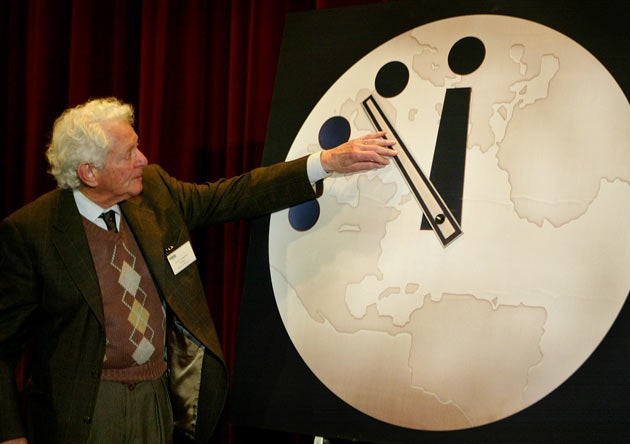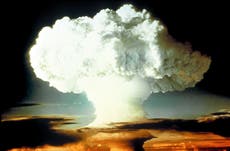Climate change has kept the Doomsday Clock ticking, but that's not the only threat we face
Disease or powerful technology could be humanity's true undoing

The Doomsday Clock has just been moved two minutes closer to midnight. The reasons given were unchecked climate change and the risk of nuclear proliferation.
The Doomsday Clock is not a bad symbol. Being “x minutes to midnight” is a vaguely foreboding message with no real probabilities attached to it. And that is good, because estimating these probabilities is extremely hard and contentious.
To correctly predict the future on these issues requires not only a grasp of the technical and scientific issues, but estimates – guesses, really – about what will happen to large scale politics in several countries and the ultimate decisions of a few key current and future leaders. Of course, uncertainty should never mean that we’re safe...
Much easier is to say that the (unknown) risk has increased or decreased, which is what the Doomsday Clock properly reflects by moving more or less close to midnight, from some arbitrary starting point.
Is it a true “doomsday” clock? Environment shifts as envisaged by the Intergovernmental Panel on Climate Change would be extremely devastating but not true doomsday; the same goes for nuclear war. Make no mistake: we are talking about millions if not billions of deaths. But that falls short of extinction risk; humans and even nations are surprisingly resilient. (Of course, if the uncertainties of climate change are larger than we think, then some disastrous +10C° scenarios might become possible.)
After analysing the various “existential risks” here at the Future of Humanity Institute at the University of Oxford, it seems to us that the real doomsday scenarios come from diseases (especially engineered pathogens) or, possibly, from the creation of powerful and dangerous technologies. These might not be as likely as climate change or war, but they could be true doomsdays. A twilight to the human race, with a void empty of intelligent life stretching forwards in a barren universe.
Stuart Armstrong is the James Martin Research Fellow at the Future of Humanity Institute.


Join our commenting forum
Join thought-provoking conversations, follow other Independent readers and see their replies